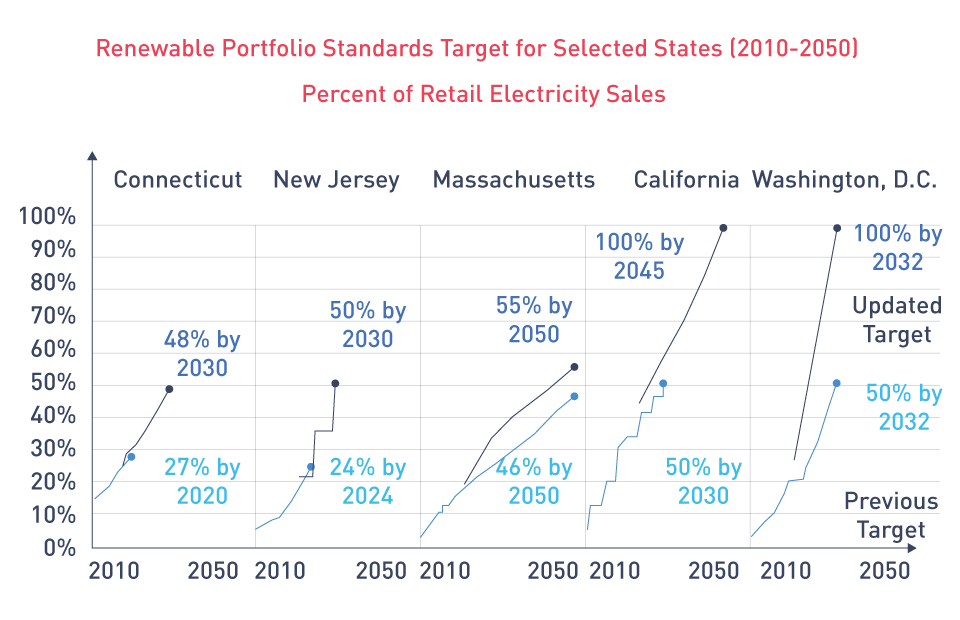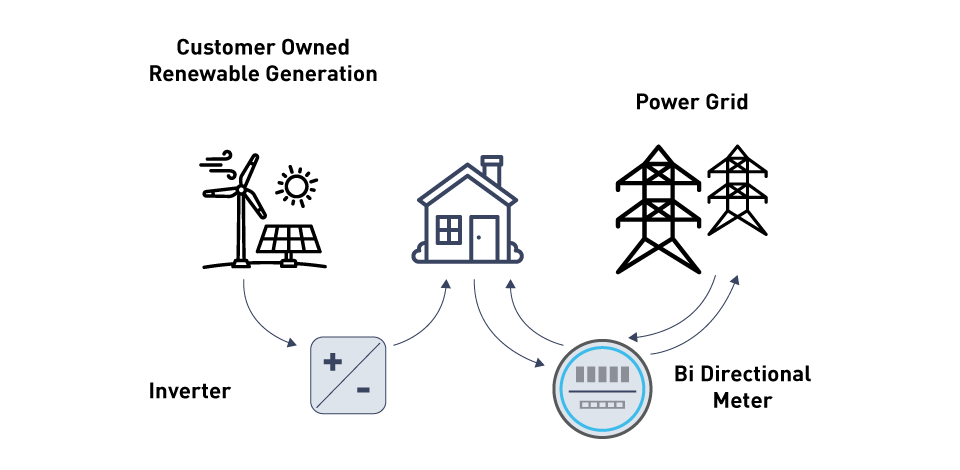Economic Challenges and Opportunities
Challenges
High Initial Investment Costs: The high initial capital needed for installation is one of the main economic obstacles to integrating renewable energy sources. Large upfront costs are associated with technologies like solar photovoltaic (PV) panels, wind turbines, and battery storage systems. These expenses cover not just the cost of buying and setting up the equipment but also the building of the required infrastructure.
Intermittency and Reliability Issues: Renewable energy sources, such as wind and solar power are intermittent due to their dependence on weather patterns. In order to maintain a steady and uninterrupted power supply, this intermittency can cause reliability problems and necessitate further investments in energy storage technology and grid management systems.
Grid Integration and Infrastructure Upgrades: Major grid infrastructure improvements are frequently required in order to integrate renewable energy sources into the current electrical networks. In order to manage the fluctuating output from renewable sources, this entails strengthening transmission and distribution networks and implementing cutting-edge grid management systems to efficiently balance supply and demand.
Market and Policy Uncertainty: Government policies and market dynamics have a significant impact on the renewable energy industry. Policy framework uncertainty, which could include modifications to tax incentives, subsidies, or regulatory requirements, may impact financial planning and investment decisions for renewable energy projects.
Cost Competitiveness: In many areas, traditional fossil fuels continue to pose a threat to renewable energy technologies, even with notable cost decreases in recent years. Ensuring cost competitiveness is still a barrier to the broad use of renewable energy, especially in markets with cheap and plentiful fossil fuel supplies.
Handling Renewable Energy Waste: As solar panels, wind turbines, and batteries age, managing trash from renewable energy sources becomes more difficult. Although the current recycling infrastructure is insufficient, proper recycling of these components can recover valuable resources, lower costs, and reduce the demand for raw materials. Investments in recycling technologies and supportive legislation are necessary to address this issue and enhance the sustainability of the energy transition.
Opportunities
Declining Costs of Renewable Technologies: The cost of renewable energy technologies has significantly decreased as a result of technological advancements and economies of scale. Particularly solar PV and wind power have seen dramatic price reductions, which has increased their competitiveness with traditional energy sources.
Job Creation and Economic Development: There is a lot of job and economic growth potential in the renewable energy business. The renewable energy sector may boost regional economies and generate a wide range of job possibilities, from production and installation to maintenance and operations.
Energy Independence and Security: By lowering dependency on imported fossil fuels, investments in renewable energy can improve energy security and independence. Utilizing their own renewable resources, nations can reduce the dangers brought on by unstable international energy markets and geopolitical unrest.
Environmental and Health Benefits: Compared to fossil fuels, renewable energy sources emit very few or no greenhouse gasses, which greatly lessens their negative effects on the environment. switching to renewable energy can have a significant positive social impact by lowering health care expenses, improving air quality, and leaving a smaller environmental footprint overall.
Innovation and Technological Advancements: The desire for the integration of renewable energy fuels innovation and technological development. Long-term economic growth and sustainability can be promoted by research and development in fields like energy storage, smart grid technology, and grid management, which can result in more resilient and efficient energy systems.
Financial Incentives and Support Mechanisms: To encourage the use of renewable energy, a number of national and international organizations provide financial incentives and support methods. These can increase the financial viability of renewable projects and draw investment. Examples of these include grants, tax credits, feed-in tariffs (FITs), and renewable energy certificates (RECs).
Grid Integration Costs and Benefits
Costs
Infrastructure Upgrades: Major improvements to the current grid infrastructure are frequently necessary for the integration of renewable energy sources. As part of this, transmission and distribution networks must be strengthened to accommodate the erratic and dispersed character of renewable energy sources. These improvements can come at a high cost, involving the installation of new transmission lines, substations, and sophisticated grid control systems.
Energy Storage Systems: Energy storage systems are crucial to addressing the erratic nature of renewable energy sources like solar and wind. It takes technologies such as flywheels, batteries, and pumped hydroelectric storage to store surplus energy produced during periods of peak output and release it during periods of low production. Installation and upkeep of these storage systems increase overall integration expenses.
Grid Management Technologies: To properly balance supply and demand, advanced grid management technologies such as smart grids, demand response systems, and real-time monitoring are required. Although these technologies increase grid stability and dependability, they come with a high initial and ongoing cost.
Frequency and Voltage Regulation: The usage of renewable energy sources may result in variations in frequency and voltage, necessitating the purchase of additional equipment for these adjustments. With the help of this technology, the grid is kept within reasonable bounds, avoiding interruptions and preserving power quality.
Interconnection and Compliance: Adhering to technical and regulatory standards is necessary in order to connect renewable energy plants to the grid. Adherence to these guidelines frequently necessitates comprehensive analyses and adjustments to guarantee secure and dependable functioning, resulting in escalated expenses.
Benefits
Diversification of Energy Sources: Including renewable energy sources enhances energy security and broadens the energy mix by reducing dependence on fossil fuels. Having a diverse energy portfolio reduces risks related to fluctuations in fuel prices and supply interruptions.
Enhanced Grid Resilience: Grid resilience is increased by the distributed nature of renewable energy sources. During grid disruptions, decentralized energy sources can supply localized power, lessening the effect of outages and enhancing system resilience overall.
Cost Savings in the Long Term: Although integrating renewable energy sources can have large upfront costs, there are substantial long-term benefits. Systems that rely on renewable energy are less expensive to operate and maintain than those that use fossil fuels. Furthermore, the declining costs of energy storage systems and renewable technologies improve their long-term economic feasibility.
Renewable Energy Support Mechanisms
Feed-in Tariffs (FITs)
Put-in tariffs (FITs) are policy tools that guarantee energy producers payment for the electricity they create and put into the grid, thereby promoting the use of renewable energy sources. Renewable energy projects benefit financially from these payments, which are usually given for a set length of time and are above market rates.
How FITs Work:
- Guaranteed Payments: In a feed-in tariff (FIT) system, producers of renewable energy are paid a fixed amount for each kilowatt-hour (kWh) of electricity they produce, independent of changes in the market.
- Long-Term Contracts: Investors benefit from stability and predictability as FITs frequently have long-term contracts (10–20 years, for example).
- Differentiated Rates: Payments may differ according to the renewable energy source (solar, wind, biomass, etc.), installation size, location, and technological maturity, among other variables.
Benefits:
- Investment Security: By lowering financial risks through long-term contracts and guaranteed payments, renewable energy projects attract investment.
- Market Entry: FITs reduce the entrance barriers for smaller producers, such as individuals and neighborhood initiatives.
- Rapid Deployment: FITs can hasten the adoption of renewable energy technologies by offering financial incentives.
Challenges:
- Cost to Consumers: Higher electricity prices are usually the result of passing on the costs of FITs to customers.
- Market Distortion: By offering set rates that do not accurately represent current market conditions, FITs have the potential to distort the electricity markets.
Renewable Portfolio Standards (RPS)
Regulations known as Renewable Portfolio Standards (RPS) force utilities to guarantee that a predetermined portion of the power they sell originates from renewable sources. The goal of these criteria is to gradually raise both the output and consumption of renewable energy.

Figure 11: RPS for selected states in the US
How RPS Works:
- Target Setting: RPS targets are set by governments and often represent a proportion of overall electricity sales, such as 20% by 2025.
- Compliance Mechanisms: In order to reach these goals, utilities must either produce their own renewable energy, buy it from others, or purchase renewable energy credits (RECs), which are certificates attesting to the production of renewable energy.
- Penalties for Non-Compliance: In the event that utilities do not comply with RPS regulations, they may be subject to monetary fines or other legal repercussions.
Benefits:
- Market Growth: The demand for renewable energy is stimulated by RPS rules, which also encourage investment and innovation in the industry.
- Flexibility: Utilities are free to select the most economical method of achieving RPS requirements, be it by buying RECs or making direct investments in renewable energy projects.
- Environmental Impact: RPS regulations contribute to a decrease in greenhouse gas emissions and a reduction in reliance on fossil fuels by raising the share of renewable energy.
Challenges:
- Implementation Complexity: Strong regulatory structures and monitoring systems are needed to set and enforce RPS targets.
- Cost Considerations: Consumers may pay more for electricity as a result of the costs incurred in complying with the RPS.
Net Metering Programs
Through the use of net metering systems, customers that produce their own electricity from renewable resources (like solar panels) can feed extra power back into the grid. They essentially lower their overall energy costs as a result of receiving credits on their electricity bills.

Figure 12: Net metering
-->How Net Metering Works:
- Metering System: A bi-directional meter counts the energy generated and returned to the grid in addition to the energy taken from it.
- Billing Credits: For the extra electricity they produce, consumers are credited. When their renewable systems aren't generating enough power, these credits can help cover the cost of the electricity they need from the grid.
- Balance Carryover: Excess credits can be carried over to subsequent billing periods in a lot of net metering programs, usually within a year.
Benefits:
- Consumer Empowerment: By encouraging investments in renewable energy systems, net metering increases resilience and energy independence for consumers.
- Grid Support: Distributed renewable energy systems can contribute to grid stabilization and support by supplying extra power into the system.
- Economic Savings: By allowing consumers to get bill credits, renewable energy investments become more fiscally feasible.
Challenges:
- Grid Management: Excessive dispersed generation can make it difficult to maintain grid stability and control, particularly when it comes to balancing supply and demand.
- Equity Issues: Wealthier consumers who can buy renewable energy systems may benefit from net metering programs more than others, which raises questions regarding equity and cost distribution.

直接登录
创建新帐号